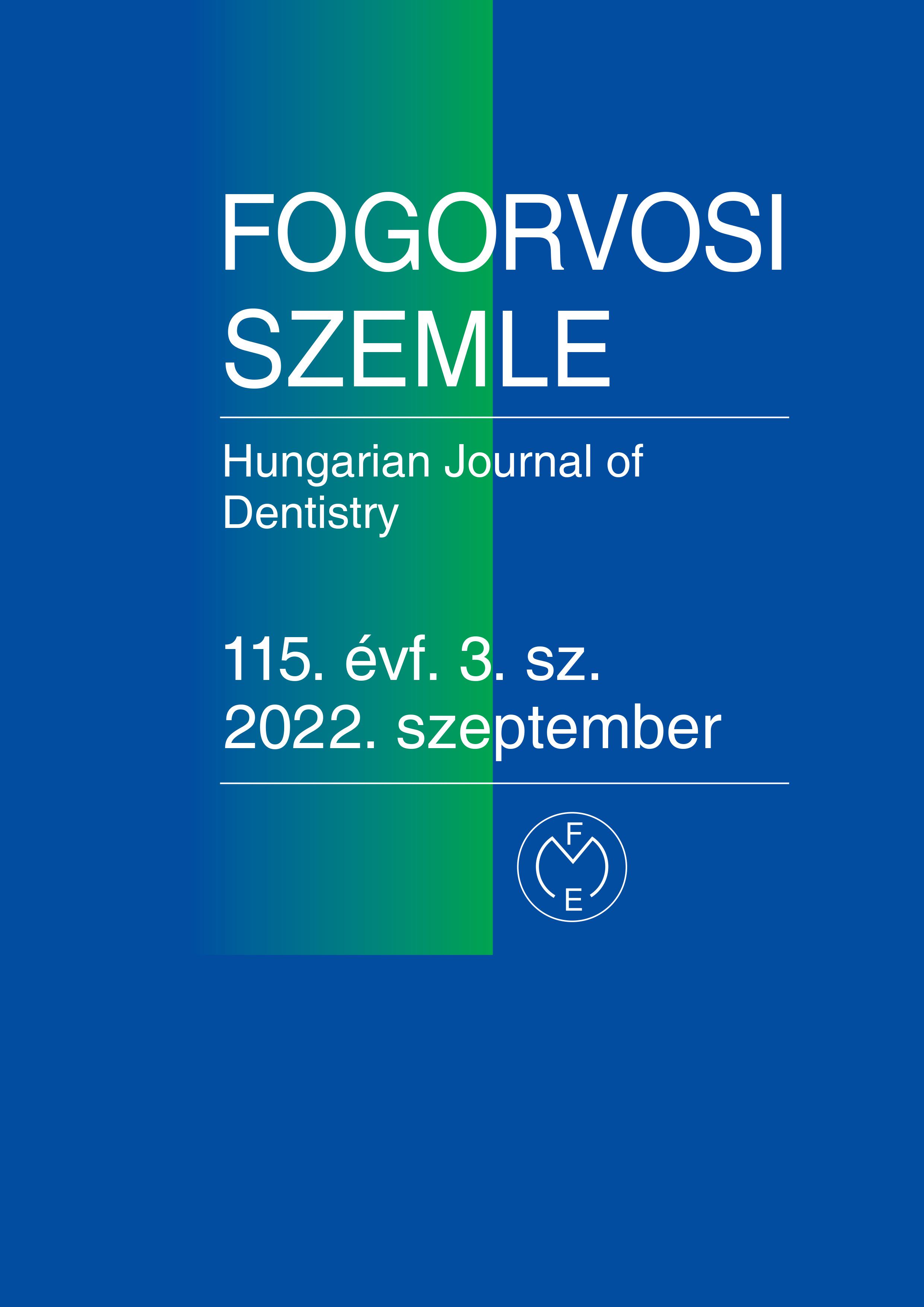Complete treatment of a patient with bruxism
Abstract
Bruxism is a condition of multifactorial origin, defined differently in different textbooks. According to one of the definitions
it is either a daytime or night-time parafunction that includes clenching and grinding. Bruxism can occur while sleeping or
being awake, and these two forms can often be associated with each other. The central etiological factors include short
waking
cycles during sleep, a shift in the production of neurotransmitters in the central nervous system, stress and anxiety
as psychosocial factors, while occlusal and anatomical abnormalities are cited as influencing factors. Clinical symptoms
include heavy dental attrition, abrasion, abfraction, soft tissue lesions (linea alba, lacerated lingual edges), frictional
keratosis
or masticatory muscle hypertrophy, and myalgia.
The aim of our case report is to present a treatment pathway for a patient with bruxism who required rehabilitation of
his entire upper and lower teeth following clinical examination. The patient had missing lower right premolar and molar
teeth and had a high degree of dental attrition on his lower in cisors and lower left premolars. The maxillary teeth had
a complete circular bridgework (damaged on it’s anterior region) and severe gingivitis due to inadequate marginal adaptation
of the restoration.
Based on the clinical examination and after recording the patient’s status, our treatment plan was to fabricate a bridge
on the remaining teeth in the anterior and left distal region and a bridge on the implants in the right distal region of the
mandible. While working on the lower restorations we planned to replace the original maxillary prosthesis with a temporary
one. After the lower dentition will have been restored, a full metal-ceramic circular bridge will be made to rehabilitate
the upper
teeth. To avoid the development of possible jaw-joint problems, we use our basic knowledge of gnathology
to adjust the optimal position of the jaw by recording the individual movement paths with a facebow, intraoral drawing
device and positional bites.
The patient’s severe abnormalities of tooth wear due to sleep bruxism have been corrected and gingivitis was also
treated. During the whole course of treatment the unilateral overload and improper edge closure of the original dental
prosthesis were corrected with a newly made upper circular bridge. Two mandibular bridgeworks on the remaining teeth
in the anterior and distal left regions and on dental implants in the distal right region were also fabricated. The patient is
satisfied with the final result of the rehabilitation, wears the nightly plastic protection splint and attends regular check-ups.
References
The glossary of prosthodontic terms. J Prosthet Dent. 2005: 10-92. DOI: https://doi.org/10.1016/j.prosdent.2005.03.013
BADER G, LAVIGNE G: Sleep bruxism; an overview of an oromandibular sleep movement disorder. Sleep medicine reviews. 2000; 4: 27-43. DOI: https://doi.org/10.1053/smrv.1999.0070
DE LEEUW, RENY KLASSER, D G: Orofacial pain: guidelines for assessment, diagnosis, and management. Quintessence Publishing Company, Incorporated Hanover Park, IL, 2018;
JOHANSSON A, OMAR R, CARLSSON GE: Bruxism and prosthetic treatment: a critical review. Journal of prosthodontic research. 2011; 55: 127-36. DOI: https://doi.org/10.1016/j.jpor.2011.02.004
LOBBEZOO F, NAEIJE M: Bruxism is mainly regulated centrally, not peripherally. Journal of oral rehabilitation. 2001; 28: 1085-91. DOI: https://doi.org/10.1046/j.1365-2842.2001.00839.x
MACALUSO G, GUERRA P, DI GIOVANNI G, BOSELLI M, PARRINO L, TERZANO M: Sleep bruxism is a disorder related to periodic arousals during sleep. Journal of dental research. 1998; 77: 565-73. DOI: https://doi.org/10.1177/00220345980770040901
MURALI RV, RANGARAJAN P, MOUNISSAMY A: Bruxism: Conceptual discussion and review. J Pharm Bioallied Sci. 2015; 7: https://doi.org/10.4103/0975-7406.155948
OHAYON MM, LI KK, GUILLEMINAULT C: Risk factors for sleep bruxism in the general population. Chest. 2001; 119: 53-61. DOI: https://doi.org/10.1378/chest.119.1.53
SCHMIDT P: A bruxizmus és a fogszorítás. In: Hermann P, Szentpétery A (szerk.): Gnatológia. Semmelweis Kiadó, Budapest, 2018; 263-77.
STRAUSZ T, AHLBERG J, LOBBEZOO F, RESTREPO C, HUBLIN C, AHLBERG K, et al.: Awareness of tooth grinding and clenching from adolescence to young adulthood: a nine‐year follow‐up. Journal of oral rehabilitation. 2010; 37: 497-500. DOI: https://doi.org/10.1111/j.1365-2842.2010.02071.x
YANAGISAWA K, TAKAGI I, SAKURAI K: Influence of tongue pressure and width on tongue indentation formation. Journal of oral rehabilitation. 2007; 34: 827-34. DOI: https://doi.org/10.1111/j.1365-2842.2007.01734.x
ŽUVELA A, ALAJBEG IŽ, ILLEŠ D, TARLE Z: Tooth wear related signs in the Croatian navy employees. Acta stomatologica Croatica: International journal of oral sciences and dental medicine. 2011; 45: 166-76.
Copyright (c) 2022 Authors

This work is licensed under a Creative Commons Attribution 4.0 International License.


.png)




1.png)



